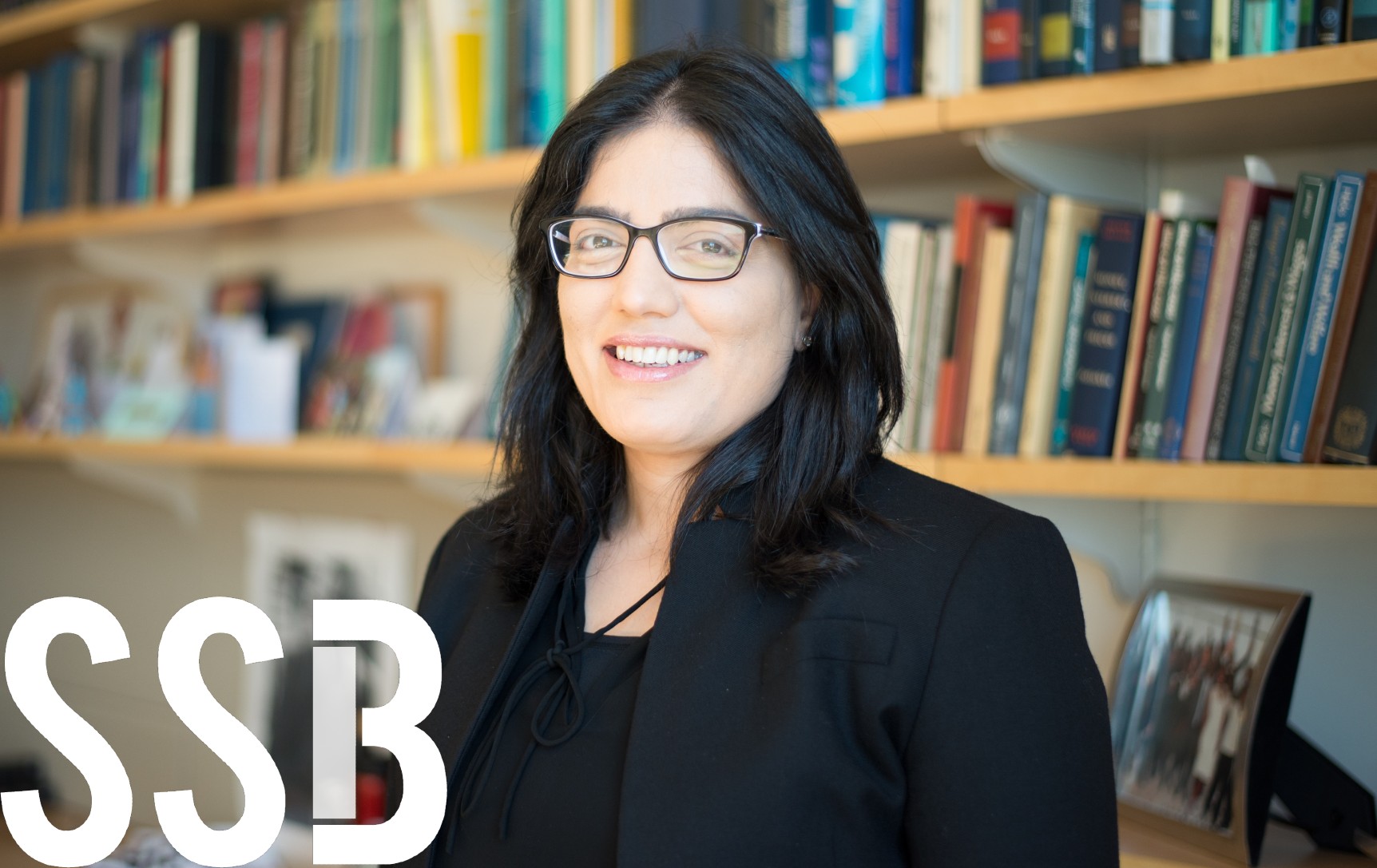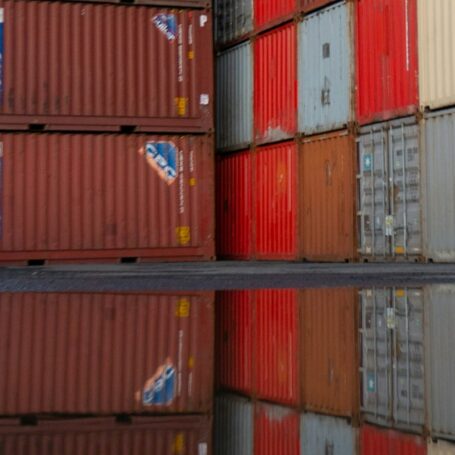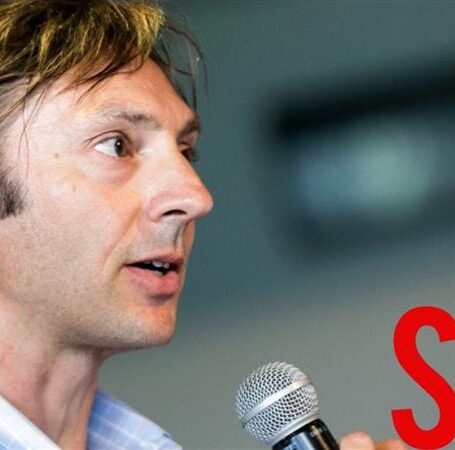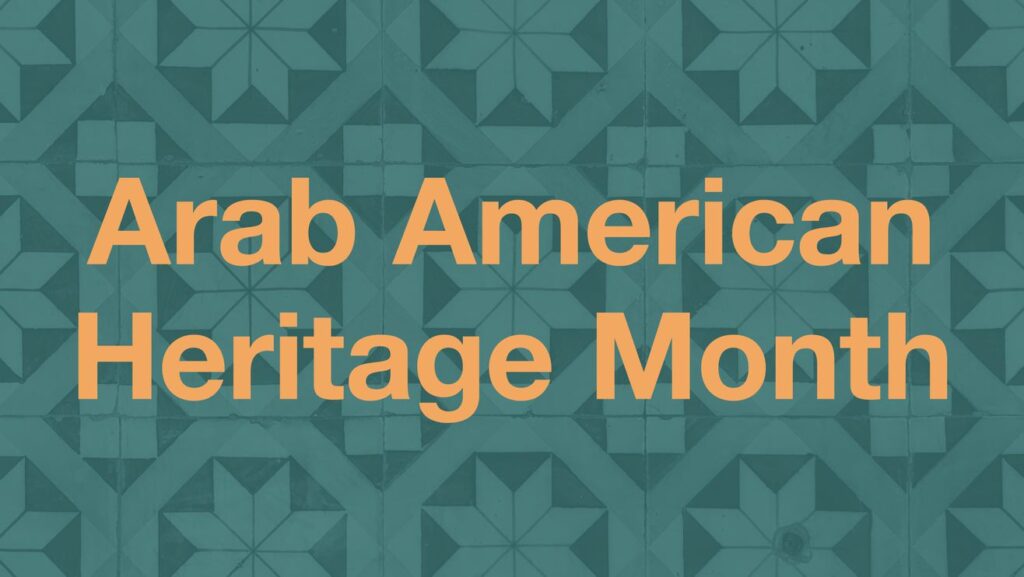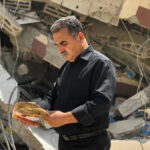Tavneet Suri on Universal Basic Income
Here’s a thought experiment: You want to spend a reasonably large sum of money providing assistance to a group of people with limited means. There’s a lot of ways you might do that with a lot of strings and safeguards involved, but what about just giving them money — “get cash directly into the hands of the poor in the cheapest, most efficient way possible.”
Economist Tavneet Suri has done more than just think about that; her fieldwork includes handing out money across villages in two rural areas in Kenya to see what happens. Her experiments include giving out a lump sum of cash and also spreading out that same amount over time. The results she details for host David Edmonds in this Social Science Bites podcast are, to be frank, heartening, although the mechanisms of disbursement definitely affect the outcomes.
Despite the good news, the idea of a universal basic income is by no means a settled remedy for helping the poor. For one thing, Suri says, “it’s super, super expensive. It’s really expensive. And so, the question is, “Is that expense worth it?” And to understand that I think we need a few more years of understanding the benefits, understanding what people do with the incomes, understanding whether this can really kickstart these households out of poverty.”
And perhaps the biggest question is whether the results of fieldwork in Kenya is generalizable. “I would love to do a study that replicates this in the West,” she says. “The one thing about the West that I think is worth saying that’s different is you wouldn’t add it on top of existing programs. The idea is you would substitute existing programs with this. And that to me is the question: if you substituted it, what would happen?”
Suri is the Louis E. Seley Professor of Applied Economics and at the Massachusetts Institute of Technology’s Sloan School of Management. She is an editor at the Review of Economics and Statistics; co-chair of the Agricultural Technology Adoption Initiative at the Abdul Latif Jameel Poverty Action Lab, known as J-PAL, at MIT; co-chair of the Digital Identification and Finance Initiative at J-PAL Africa; a member of the executive committee at J-PAL; and a faculty research fellow at the National Bureau of Economic Research.
To download an MP3 of this podcast, right-click this link and save. The transcript of the conversation appears below.
David Edmonds: How about we give everyone a guaranteed minimum income, no strings attached? It’s a proposal that’s been around for a long time, but it’s always had its detractors. Would it really help lift people out of poverty? Isn’t there a danger? Some people would just fritter the money away. Paul Niehaus, Abhijit Banerjee, Michael Faye, Alan Krueger and today’s interviewee, Tavneet Suri, have cooperated in a research project to test this involving a unique experiment in East Africa. Tavneet Suri, welcome to Social Science Bites.
Tavneet Suri: Thanks so much for having me on, David, it’s a pleasure to be here.
Edmonds: We’re going to discuss aid and the developing world today, and in particular, a rather extraordinary experiment. So can you start off by telling us a bit about GiveDirectly, the charity you’ve been researching? Who are they? And what do they do?
Suri: So GiveDirectly is a charity that gives unconditional cash to the poorest households in the world. And they do this in probably about 14 different countries close to over a million, I think, recipients reached globally, probably more, maybe one and a half, and the aim is to try and get cash directly into the hands of the poor in the cheapest, most efficient way possible. Put no real conditions around it and just be able to do a bit of this support to the poorest.
Edmonds: And the money comes from where – from individuals from foundations, where did they get their money from?
Suri: I think it’s all over. A lot of individuals, a lot of foundations, all sorts of stuff.
Edmonds: How do they transfer the money from the wealthy West to some of the poorest parts of the world?
Suri: Yes, that’s a great question. I’m working on their Africa programs and there, it’s all digitally done through something we call mobile money. You can deliver it directly to people’s phones onto a digital wallet they have on their phones called mobile money.
Edmonds: So, tell us about the project that you yourself researched.
Suri: So, we’ve been working with GiveDirectly for a while. And the aim of what we’re doing is trying to understand whether a universal basic income can be a pathway out of poverty for people. I don’t know if you’ve heard of this concept of a universal basic income, but the idea is you would give a very basic income that covers basic needs to most people and an income that comes in a stream of payments, right, like once a month as you would get your salary or income. We work with GiveDirectly to build a large study around universal basic income.
Edmonds: You identified a particular village in Kenya. Is that correct?
Suri: Not a particular village. We have two sub-counties we’re working in, in Kenya, in two different parts of the country. It’s in poorer counties in the country. And in those we identified about close to 300, 295 villages, to be part of the experiment. So it’s not one village, it’s several hundred villages.
Edmonds: Have you been to some of these villages in Kenya? And can you describe them to me?
Suri: Yeah, absolutely. I’m actually Kenyan, by the way. So I was born and raised there, which is why I do research there. But yes, I’ve been to them several times. In fact, I was just there, I was there in February. Yeah. I mean, they’re not rich people, right? This is rural Kenya. They’re pretty poor. They’re mostly growing and eating maize. That’s the main staple of the whole country. A lot of them might not eat much meat a year, maybe at Christmas.
Edmonds: They’re living in huts? They’re living in shacks? What are their living conditions like?
Suri: So not really huts mostly, think of mixing a bunch of stuff to make walls, it has some concrete, but it’s not concrete walls. It’s like, you know, some mud, wood, some concrete, hold it together, there’s often a metal roof on top, a metal sheet roof. Sometimes you’ll get some houses with tile depending on who’s rich and who’s poor. So, there’s a distribution, of course, within the village. You know, a bit of furniture, of course, furniture is important. People like having a room they entertain in; they might cook mostly outside.
Edmonds: So let’s get back to the experiment. How much were these villages given?
Suri: Yeah, so let me tell you a bit more about the experiment before I do that. We kind of decided we not only wanted to study this idea of a universal basic income, but we wanted to also think about the universal basic income piece we’re studying that particular set of villages are getting a basic income, I’ll tell you amounts in a second, but for 12 years. So it’s the equivalent in PPP dollars, which is sort of accounts for purchasing power. So purchasing power parity dollars, it’s about $1.88 per adult per day, OK, and we committed to give it to them for 12 years, which is quite a long time.
So we were thinking, you know, universal across people and universal somewhat across time, but not quite universal across time because 12 years is not forever, but it’s still a large chunk of time and we want to go commit to a long experiment. This ends up being quite expensive as you can imagine. If I had to scale this up across the country, it’s going to cost a ton. And so we said, “Well, what’s the right benchmark? The right benchmark is not nothing.” The right benchmark is maybe cheaper alternatives. And so we thought we would see how much better the 12-year does relative to a two-year. So imagine getting the same amount per day, everybody gets it in the village, but just for two years’ time bound. A lot of the World Bank’s cash transfer programs kind of have that flavor – they’re short-term kind of two year’s time-bound approximately, and then they go on to move to another poor community and do it there.
The other comparison we did was we can do a comparison to the two-year that’s a monthly payment, we could also do a comparison where we take the two-year amount and give it to you upfront lump sum, right? If you’re really poor, then maybe you can’t borrow, you can’t invest because you don’t have access to financial markets, maybe a lump sum would be quite useful. So, every adult has their own phone and receives their own income. So, if you have a husband, a wife, and an adult son in the household, there’s three people getting the UBI.
Edmonds: So there are these three categories. There’s the villages who get the lump sum, the villages who get the basic income over a 12-year period, and there are the villagers who get this income, but only over a two-year period. And then there’s the control group who get nothing at all.
Suri: Correct.
Edmonds: Can I ask you whether there was a problem about this experiment being distorted in that the Kenyan authorities might have thought, if those villagers are getting money for 12 years, we don’t need to prioritize them when it comes to building the well or fulfilling their infrastructure needs, or whatever it might be? Was that a problem with designing the experiment?
Suri: Yeah, great question, David. To be honest, the government is not doing very much in any case. So, you know, we can’t sort of wait around for them. That’s one not great answer.
The second answer is, we want to know if that happens. It’s not even just the government. Imagine there’s a nonprofit working there and says, “Actually, these guys are now doing fine, we’ll go somewhere else, because we’re wanted somewhere else.” So, we actually measure this. So, the results we have out are at the two-year mark. So just to think of what the two-year mark in this experiment means, it means everybody who’s in one of those groups has gotten the same amount of money, right? The difference is one got it lump sum, one knows it’s about to end, and one knows I’ve still got 10 years more of income coming, but they still gotten the same amount of money at two years. So, we actually in our two-year surveys, try to measure everything humanly possible, unfortunately, or fortunately, as the case might be. Unfortunately, for my field staff, maybe fortunately for us, right. So, we actually measured whether NGOs were present, whether they were getting benefits from NGOs, from the government, all of this to see wait, are we seeing people retreat out? And we want to account for that, because imagine we didn’t see effects? It might be because it just completely substituted what was already there.
We actually don’t see any evidence of that. You know, the NGOs that are in these places are doing very targeted things to very specific parts of the population, who might still need it, like, you know, there’s a bunch of health NGOs doing HIV stuff or things like that. So, we don’t see actually much evidence of that happening.
Edmonds: That’s very good news for your data, I guess. And so, it suggests there’s no distorting element. Tell us what the results were between, well, these four groups.
Suri: Yeah, absolutely. So, you know, we’re gonna see all groups do better than the control. First, let me just be upfront, that’s in terms of something we measure called consumption, what you spend and consume in total over the past year, right? Imagine I could sit down and document everything you spent; we use that to measure poverty. When we do poverty rates, it’s all based on this measure of consumption. So, we measure consumption, we see improvements in consumption and wealth. A lot of dimensions improve across the board across groups. The comparison across the groups is also interesting, not just relative to the control, right. So they all do better than the control for sure. The big change that we see that’s probably the most surprising part of this is we do see an increase in private enterprises. We see people start businesses.
Now I don’t want you to think I’m going to start Apple, right? This is rural Kenya, it’s not going to be some big, massive 2000 employee business, right? It’s going to be a small store selling something or you buy a motorbike, and you use that as a taxi, but these small-scale businesses. We do see increases in businesses, and those are quite substantive, actually. We see a pretty large increase in the number of enterprises that show up in these villages in their revenues and in their net revenues. We see those mostly in the lump-sum arm and the long-term UBI arm. There we’re seeing about a 35 to 40 percent increase in the number of businesses; we’re seeing almost a doubling of revenues; and almost a doubling of basically a measure of profits. We’re seeing very little on that front in the short-term arm, it’s very small increases in the number of enterprises, not big changes in revenues and profits.
Edmonds: So, the number of enterprises is going up quite dramatically for the villagers who are getting lump sums, and for the villages who are guaranteed a 12-year period, but not so much, for those who are only going to get the money for a two-year period. Tell me why you think that is.
Suri: So basically, the lump sum, you can understand why. They get a big lump sum, it’s quite a large sum of money, if you think of two years’ worth it’s per person about 500-ish dollars per adult in PPP values. And there’s more than one adult per household, right? So, think this will multiply by the number of adults in the household. So, you can imagine for starting a business, I need some capital to start a business and the lump sum is helping you do that, that seems very intuitive to me.
In the long term, it’s actually pretty cool. They use this financial tool that we call an RSCA, a rotating savings and credit association. Let me explain what that is. So I get together with a bunch of my friends, and we meet, let’s say, weekly, we all bring some money to the table, whatever our monthly was that month, maybe from the UBI, which is about 22-ish dollars, lets say, so I bring it to the table, we all put some money in and every week, someone draws a straw, and that person takes the whole pot. Of course, I don’t get two shots at it right until everybody’s had a go. But basically, you go through this group of people and get a lump sum out of it, even though you bring money to the table every week.
Edmonds: So it’s not a lottery because everybody wins eventually.
Suri: Correct. It’s not a lottery. Everybody wins eventually but it’s a way of taking a stream of payments and converting them into a lump sum by using your friends in the village to put in their stream and then one week someone gets a lump sum.
Edmonds: Does that mean we see as much entrepreneurial activity amongst that group as we do amongst those who get the lump sum?
Suri: Yes, we see about the same sized effects. Exactly.
Edmonds: I guess one concern that you might have had beforehand, is that if you give away a lump sum, there’ll be a number of people who go and blow it in the first week. There’s no Vegas in Kenya, but the equivalent and go and consume dramatically in the first week or two and lose their entire lump sum without saving and without investing.
Suri: Yeah, that’s a worry that lots of people have, it turns out not to be true. No one does that. Like when you’re poor, that is not what you do. We don’t see any evidence of that, we don’t see a ton of consumption of crazy things. We see people buy assets, they buy a cow, they put a new roof on their house, they do all these things. Not everybody starts a business, some start a business, but the others seem to be doing other investments.
Edmonds: Can I ask you a logistical question? How are you going around measuring this? Are there people with clipboards who are asking the villagers, “How much did you consume this week? What did you spend your money on?” And so on?
Suri: Maybe not clipboards! But I have a team of surveyors, we train them, we write an instrument, we write a survey instrument. We had for this data collection about 300 surveyors trained and then they have tablets, we put it on tablets.
Edmonds: Have you noticed any health benefits all the way down the scale from minor illnesses to more significant diseases and illnesses?
Suri: Yeah, we don’t see very much of that. Also, because it’s only been two years.
One thing we do see, which is kind of cool is we see big improvements in mental health almost immediately. And that’s because you can imagine, like, you know, a lot of poor people have to think about how I’m putting food on the table tomorrow. And when you don’t have to think about that, it turns out, you’re just much happier and less depressed, right? So we see big improvements in mental health, everybody does better than the control.
But the long term UBI does much better than the lump sum. And now that could be for two reasons. One is the lump sum came two years ago, and I don’t have a continuing source of income. Two, a bunch of people started businesses, and those might be stressful because they’re riskier. And so, we don’t know why exactly, again, do better than the control, but not as well as the long term UBI.
Edmonds: The results seem to suggest that if there’s a preferred way of distributing this money, it’s a regular payment over a long period of time. Is that a fair summary?
Suri: No, I wouldn’t actually go that far just yet, David. Here’s why. I would say, if you’re going to do something short-term, a lump sum does better than the stream. The short-term arm doesn’t do as well as the lump-sum on any dimension at two years. It does better than the control, so it’s better than doing nothing. But if I can take the same amount of money and give it as a lump sum, it does better than the stream by a lot. For the long term, I think the issue is this, it’s going to cost six times more. The benefits right now at two years look like the lump-sum. The question is, do those benefits keep growing, keep persisting? Does the lump sum decline over time because they aren’t getting any more? So, I think before I can answer that question, we need to go back to the field and collect another round of data to look at how this does over the long term, right.
Edmonds: $64 million question: What are the implications of this experiment, for charities, generally, and for universal benefits more widely and how we understand them?
Suri: Yeah, that is indeed the $64 million question, maybe even more than 64 million, David. For charities, there’s one broad point, which is trying to understand the impact you’re having is really important. I’m not sure I would have predicted these results, given what they are. And so studying them has led us to interesting insights.
So for example, do you think of the two-year arm and the lump-sum arm, they have the same amount of money just structured differently, and the structure differently has a huge difference in the impacts right? So I would really want to understand those sorts of things, because I could take the same money and have a much larger impact for that same pot of money. And so I think this idea of trying to be creative to understand the impact you’re having, and how even small changes in how you think about distribution systems can matter. So I think that’s one.
I think the second would be, you know, for universal benefits, I think we still don’t know that costly, that is going to be the biggest sort of downside of them. You know, we tried to measure a bunch of downsides, the one you mentioned about NGOs and government leaving, one we really worried about was that political elites in the villages would come to you and say, “This came because of me, you need to give me some money back,” right? We wanted to make sure that didn’t happen. It didn’t. We were worried about crime rates going up, because there’s lots of money around, that didn’t happen. So we did a good job of trying to understand all the downsides of these universal benefits like labor, everybody who’s worried about the lazy welfare recipient, right? People will stop working. We don’t see that at all. If anything, labor supply actually goes up a tiny bit, but we don’t see a reduction, we see people switch what they do, they switch out of not-great wage jobs into starting a business.
So, the only downside we’re left with is it’s super, super expensive. It’s really expensive. And so, the question is, “Is that expense worth it?” And to understand that I think we need a few more years of understanding the benefits, understanding what people do with the incomes, understanding whether this can really kickstart these households out of poverty. And I think we need to get more data to do that.
Edmonds: It will be much more expensive if it was applied in the UK or the US. Do we have any idea whether we can replicate this in the West?
Suri: Yeah, I would love to do a study that replicates this in the West. The one thing about the West that I think is worth saying that’s different is you wouldn’t add it on top of existing programs. The idea is you would substitute existing programs with this. And that to me is the question: if you substituted it, what would happen, right? It’s exactly your first question on this project. You know, are we substituting something? It turns out, we’re not because there’s not a lot of welfare in poor countries, there’s just not a lot of distribution. There’s nothing really big going on. So, you don’t end up substituting. But here in the West, you would do that. So, it’s going to cost less than you would think if you were just adding it on top.
The other issue, I think, is we don’t know the impact it would have; we haven’t really thought through that. And so, I think the best way is to experiment. We need to experiment a little in the West with this and see what happens before we try to decide we’re going to spend billions on this, right? So, I’d like to see some of that happening and I hope it will.
Edmonds: One of the key findings that I love about your result is that charities traditionally are quite paternalistic. If we’re distributing money from the West to Sub-Saharan Africa or some other parts of the developing world, it’s the charities that determine how this money is spent. And what’s nice about GiveDirectly and the experiment that you’ve been conducting, is that it passes the money over to people to spend as they want. And it turns out, they do quite well with that money.
Suri: Yeah, absolutely. That’s correct. You know, one of the benefits people get of UBI is that it lets you do what you’ve always wanted to do. Right? It gives you a freedom, a complete freedom to do what you’ve always wanted to do. And that’s kind of one of the nice sides of it is you can say, “Look, I’ll give people freedom and see what happens,” and it turns out most of them use it in ways that helps them at least try to use it in ways that help them right, you can start a business and might fail but you at least give it a shot. Right? So I think a lot of the common like, you know, “It’s going to get spent on this” or “It is going to get wasted,” or “They’re not going to work.” We just don’t see much evidence of any of that in general.
Edmonds: And is the Kenyan government monitoring your experiment very closely? And do you think they’ll adopt the lump sum proposal that seems to be implicit in your results?
Suri: Yeah, good question. I mean, I hope so. We do talk to policymakers, we do try to get information out, even if it’s not them hunting us down. And not just Kenya, we present to other places too, who are interested. Some of our work was used in the South Africa COVID response actually, to say, “Oh, maybe we need to do something like this in COVID response.” So, we do see our results being used, and hopefully more, as much as we can.
Edmonds: And you’ve got another 10 years of data to collect.
Suri: Absolutely. And maybe even more. I joke that people think about leaving wills for their money. I think about leaving a will for my project, because you know, people are going to want to know when you stop at the 12 years, do the effects disappear? Is there a crash? Right? You hit a cliff and then people fall off this cliff? You know, that’s now at 20 years. So, forget 10 years, David, I’m at 20 years and now I need to write a will for my project.
Edmonds: Tavneet Suri, thank you very much indeed.
Suri: You’re very welcome. Pleasure talking to you, David.
